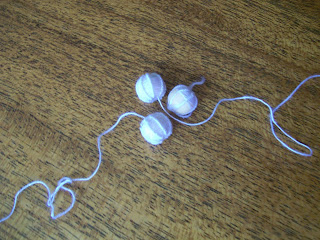Period Costumes for Stage and Screen walks you through draping women's clothing for the 16th-18th centuries. The first quarter of the book gives an introduction to measuring and draping, with techniques for constructing basic bodices, petticoats, and a variety of skirt-supporting hip pads. Chemises are also covered briefly. The remaining three chapters each cover a century of clothing: specific support garments like corsets, farthingales, and panniers, as well as gowns and some accessories, such as partlets and ruffs. Line drawings of dresses from period painting are included, as well as cutting diagrams. The appendix defines some of the terms and tools used, and also offers guidance on skirt widths and estimating yardage.
There's a lot of material to cover, but I think the author does a good job of showing multiple versions of dresses, so that a determined designer can create a variety of garments for a given time period, using the same basic shapes but varying the sleeves, collars, trim, etc. She does an impressive job of deciphering garment/cutting shapes from historical paintings.
I also appreciate the "philosophy of costuming" remarks made at the beginning of the book: in addition to distinguishing between designing "clothing" for realistic settings versus "costumes" for fantastic ones, Ms. Hunnisett recommends studying of original garments, and using the appropriate undergarments of the time period. In a perfect world, every designer of historic costume pieces would take those last two concepts to heart.
Score: 4.5 Stars. [Subscores: 5 for costuming, 4 for living history use]
Accuracy: The shapes are taken from period paintings, but the techniques and materials are often modern attempts to emulate the older methods. Very useful if you're trying to recreate garments from Holbein's court portraits.
Difficulty: Intermediate to advanced. While basic draping is explained, this isn't a step-by-step illustrated pattern: you'll need a fairly solid sewing background or a lot of enthusiasm (and good spacial reasoning) to use this book.
Strongest Impression: The world (of costume dramas) would be a better place if theatrical and movie costumers read this book and observed its advice. Living historians will likely find the information useful, but should look into period construction techniques, and may find other titles more helpful to their objectives.














